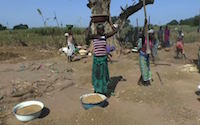The area of “Ethnic Kyanga” who has shifted to Hausa but retained cultural traits such as clan organisation and facial markings suggests that the Kyanga have historically populated a larger territory in the North from Gaya to Kamba to Kandi. These Mande groups are considered as indigenous “first-comers” (Walther 2012: 76), who own land and hunting grounds. It can be stated that Kyanga and Shanga got more and more marginalized in the last centuries. However, the former political organisation is still unclear.
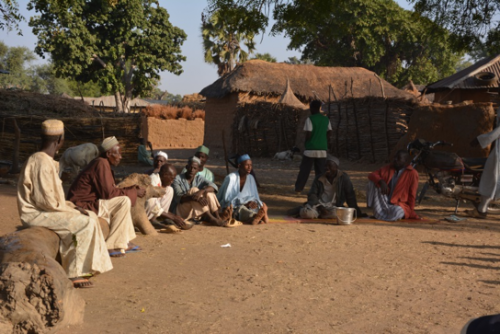
Village square at Tungan Bage
The collection of ethnographic data and videos shows that the Kyanga economy is based at present upon agriculture and the production of food crops such as guinea corn, maize, sorghum, rice, cassava and millet, while cash crops include groundnut and cotton. The mode of production and the crops grown have changed under colonial administration from subsistence farming to surplus production. Fishing and hunting has traditionally played a major role in meat production but herding has become more common in the last 100 years. Some years before Kyanga were also producing cotton cloth and traded in pre-colonial times at the former market of Illo with Hausa from the other side of the Niger. While ironwork and blacksmiths are found in Kyanga villages, pottery is not.
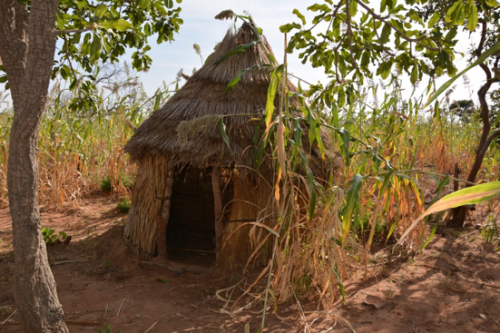
Millet field with shelter
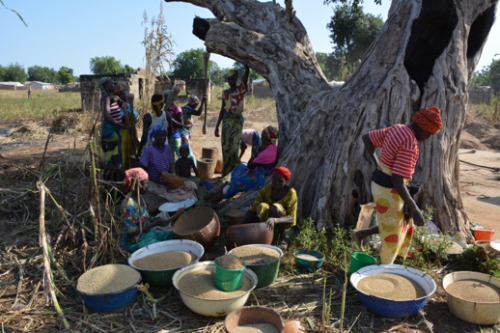
Grain processing
Traditional beliefs and the spirit possession cult, sharing similarities with Bori but as well with Holey/Hauka, play a seemingly rudimentary but historically very important role. They have been much supressed by the Islamic Hausa and colonial administration. Some individual Kyanga chiefs in the North became Muslim centuries ago, but the majority converted to Islam only recently during the last 50 to 80 years.
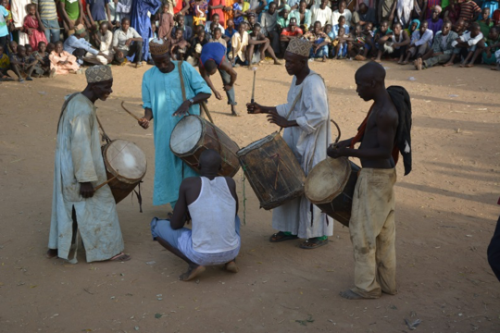
Drummers at the wrestling match at Tungan Bage



